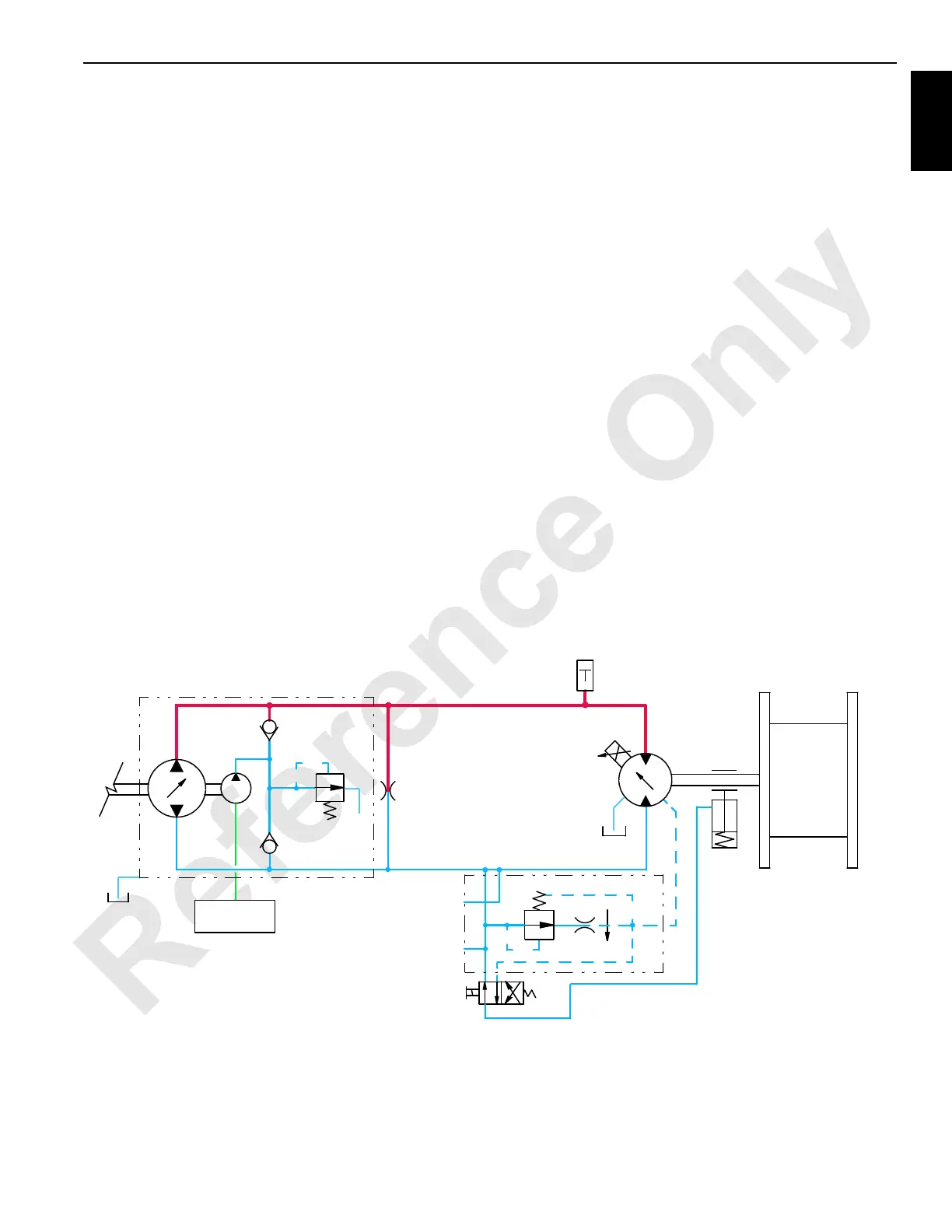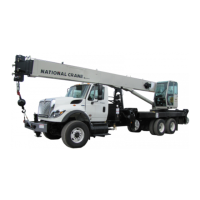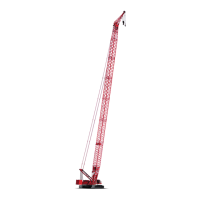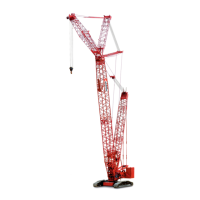Manitowoc Published 09-10-14, Control # 065-24 1-43
14000 SERVICE MANUAL INTRODUCTION
Lowering Load
When drum 2 control handle is moved forward for lowering,
an input voltage of 2.6 volts or more is sent to node 1
controller. Node 3 controller sends a variable 0 to 24 volt
output that is divided by resistors and applied to drum 2
pump EDC in raising direction. Node 4 controller sends a
variable 0 to 24 volt output that is applied to motor PCP.
Node 1 controller checks that drum block-up limit switches
are closed and no system faults are present.
Pump EDC tilts swashplate in raising direction to satisfy
pressure memory. Node 1 controller compares drum holding
pressure to value in pressure memory. When system
pressure is high enough, node 4 controller sends a 24 volt
output to enable drum 2 brake release solenoid HS-4. Drum
brake solenoid shifts to block drain port and opens port to
low-pressure side of drum system to release brake from
drum shaft.
Pump EDC tilts swashplate in lowering direction as
hydraulic fluid flow is from pump outlet port A to motor inlet
port. Return fluid is from motor outlet port to pump inlet port
B.
Node 4 controller output voltage to pump EDC and to motor
PCP is relative to control handle movement. As control
handle is moved back, an output voltage increases the pump
swashplate angle.
When system pressure exceeds the ECOR (Electric
Compensating Over-Ride) valve setting of 3600 psi (248
bar), the valve shifts to direct flow from shuttle valve into
maximum displacement side of servo cylinder. The ECOR
valve over-rides the command from servo PC valve,
increasing motor displacement and output torque and
reducing output speed. When ECOR valve closes, control of
the motor returns to servo PC valve.
Node controllers continuously balance drum system
pressures and monitor motor displacement angle so motor
displacement goes to minimum when control handle is fully
forward, if motor torque requirements are not too high. Node
1 controller monitors motor displacement and controls motor
speed by regulating the hydraulic fluid flow through pump.
When drum 2 control handle is moved toward neutral
position, node 1 controller compensates for hydraulic system
leakage or changing engine speed. This shifts motor back to
maximum displacement for slower output speed to slow
drum rotation.
When drum 2 control handle is moved to neutral position,
node 4 controller sends a zero output voltage to pump EDC
that moves swashplate to center position. Node 1 controller
stores load holding pressure in pressure memory. After
control handle center switch opens, Node 4 controller sends
a zero output to disable brake release solenoid HS-4. Drum
brake solenoid valve shifts to block pilot pressure to brakes
and opens a line to tank. When brake applies, an input signal
is sent to node 1 controller. Node 4 controller sends a zero
volt output to pump EDC to de-stroke pump.
FIGURE 1-25
X
X
X
Suction
Manifold
Drum 2 Pump #5
Raise Load
Lower Load
350 psi
(24 bar)
Drum
Brake
Drum 2
Opens at 200 psi (14 bar)
Pressure
Sender
.060
Equalizing
Line
HS-4
4 g/m 15 L/m
14CSM1-115
B
C

